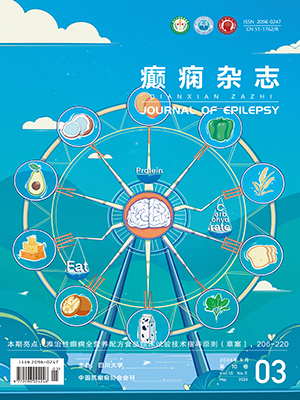| 1. |
F Marossero, GP Cabrini, G Ettorre, et al. Stereo-EEG and surgery in partial epilepsy with temporo-parieto-occipital foci. Acta Neurochirurgica, 1980, 30: 113-116.
|
| 2. |
Alessandro De Benedictis, Hugues Duffau, Beatrice Paradiso, et al. Anatomo-functional study of the temporo-parieto-occipital region: dissection, tractographic and brain mapping evidence from a neurosurgical perspective. J Anat, 2014, 225(2): 132-151.
|
| 3. |
Davide Tiziano Di Carlo, Nicola Benedetto1, Hugues Duffau, et al. Microsurgical anatomy of the sagittal stratum. Acta Neurochirurgica, 2019, 161(11): 2319-2327.
|
| 4. |
Gloor P, Olivier A, Quesney LF, et al. The role of the limbic system in experiential phenomena of temporal lobe epilepsy. Ann Neurnl, 1982, 12(2): 129-144.
|
| 5. |
Bien CG, Berminger FO, Urbaeh H, et al. Localizing value of epileptic visual auras. Brain, 2000, 123(Pt2): 244-253.
|
| 6. |
张冰清, 周文静, 王海祥, 等. 起源于颞后-枕交界区癫痫的电-临床研究. 中华神经外科杂志, 2015, 12(3): 176-120.
|
| 7. |
吴英, 陈述花, 张玮, 等. 颞-枕叶交界区癫痫的致痫区定位研究. 中华神经外科杂志, 2012, 29(1): 3-6.
|
| 8. |
Chong H. Wong, Armin Mohamed, George Larcos, et al Brain activation patterns of versive, hypermotor, and bilateral asymmetric tonic seizures. Epilepsia, 2010, 51(10): 2131-2139.
|
| 9. |
张玮, 龙琦婷, 郭强, 等. 后头部癫痫发作中的痫性眼球运动. 癫痫杂志, 2016, 2(5): 406-413.
|
| 10. |
SP Dukelow, JF DeSouza, JC Culham, et al. Distinguishing subregions of the human MT+complex using visual fields and pursuit eye movements. J Neurophysiol, 2001, 86(4): 1991-2000.
|
| 11. |
Ali H Palejwala, Kyle PO Connor, Panayiotis Pelargos, et al. Anatomy and white matter connections of the lateral occipital cortex. Surgical and Radiologic Anatomy, 2019, 42(3): 315-328.
|
| 12. |
Conzalez-Martinez JA. The Stereo-electroencephalography: the epileptogenic zone. J Neurophysiology, 2016, 33(6): 522.
|




